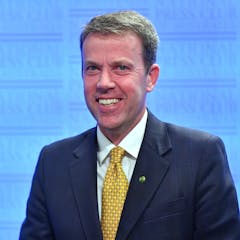
Articles on Higher education policy
Displaying 1 - 20 of 215 articles

Reports of big university budget surpluses appear to undermine calls for their federal funding to increase. But a closer look at how the surpluses were achieved reveals why change is needed.

Higher education didn’t feature heavily in the election campaign, yet the sector has high expectations of the new government. The key is the idea of an accord and the change in approach it implies.

The problem of insecure employment for academics came to a head during the pandemic. The neglect of this issue is eroding our intellectual capital along with education and employment opportunities.

The goal posts for black women at historically white higher education institutions are constantly shifting.

International education is a huge source of income for the sector and the broader economy, but students are concentrated in a limited number of institutions and most come from a few source countries.

New research shows university students who gained entry via bridging programs outperform others who gain admission through ATARs and other means. They are also more likely to complete their degree.

The sameness of the way in which universities present themselves is based on a shared view of what they think stakeholders want. Behind the official facade it’s more like ‘organised anarchy’.

At best, when universities differentiate and specialise it can marshal talent and sharpen their focus. At worst. though, this debate can present universities with a false dilemma.

More and more Australians are gaining university degrees. And increasingly that means a degree does not guarantee a job, although it did appear to offer some protection against COVID job losses.

Educating international students provides far more benefits for Australia than is commonly acknowledged. But it has also created problems and an ambitious agenda is needed to overcome these.

Works by eight artists in the Dobell Drawing Biennial draw on dreams, history and reality. But drawing has escaped the gallery and will scribe on despite less government support for the arts.

Students who fail units are highly likely to fail again without targeted assistance. But when universities intervene early to support these students, their rate of failure has been nearly halved.

Although the government has identified a real problem, its heavy-handed regulation would create unnecessary red tape for universities and exclude students who should get a second chance.

Doubling the cost of degrees in the humanities and social sciences has a disproportionate impact on women because they account for two-thirds of the students.

India’s new National Education Policy is impressive, and could create opportunities for Australian universities. The key issues, however, relate to implementation.

Teachers have never been more appreciated than during COVID-19. But neither expressions of support, nor cheaper degrees will overcome the four big structural challenges facing the profession.

Travel bans, a recession and the government’s university reform package will leave an estimated $4.7 billion gap in research funding that needs filling to maintain our current output.

Research shows predictions for the jobs of the future are unreliable, and the government’s funding changes don’t match what their own data shows about future earnings.

The reduced rate of funding to universities (of up to 17%), per place, for national priority courses sends perverse messages to universities.

The implications of the government’s announcement are about more than incentivising the career trajectories of students. They are a direct assault on the premise of universities.
